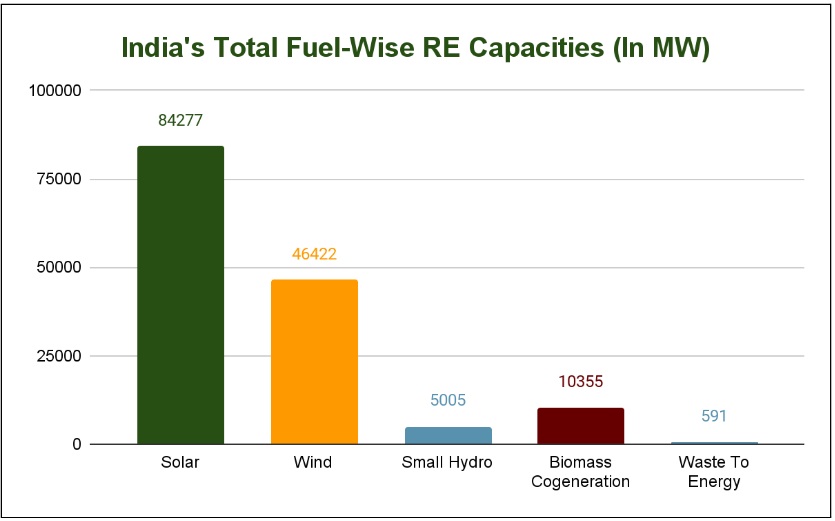India Adds 11 GW of Solar Capacity in First 5 Months of 2024
India has made significant strides in its renewable energy sector, adding an impressive 11 GW of solar capacity in the first five months of 2024. This rapid growth underscores the country's commitment to expanding its renewable energy infrastructure and reducing its carbon footprint.

The surge in solar installations is largely attributed to several key factors. Firstly, the government’s proactive policies and incentives have played a crucial role. The suspension of the Approved List of Models and Manufacturers (ALMM) order allowed developers to import solar modules at lower costs, facilitating the completion of previously delayed projects. Additionally, falling module prices have significantly reduced the cost of large-scale solar projects, improving their internal rate of return and making investments more attractive for developers.
Rajasthan and Gujarat have been at the forefront of this solar boom, contributing significantly to the overall capacity additions. Rajasthan alone accounted for 38% of the new installations, while Gujarat followed closely with 35%. These states have benefited from their proactive approach to renewable energy policies and supportive infrastructure.
The rapid growth in solar capacity is part of India's broader goal to achieve 500 GW of renewable energy by 2030. To meet this target, India needs to add at least 50 GW of renewable energy capacity annually for the next six years. This ambitious goal underscores the country's commitment to becoming a global leader in renewable energy.
As of March 2024, India's cumulative installed solar capacity reached 82 GW, representing 18.5% of the total installed power capacity and 43% of the total installed renewable energy capacity. With a substantial pipeline of projects scheduled for 2024 and beyond, India is well on its way to achieving record-breaking growth in the renewable energy sector.
In conclusion, India's remarkable progress in solar energy highlights its dedication to sustainable development and reducing reliance on fossil fuels. The continued expansion of solar capacity is expected to play a pivotal role in achieving the nation's long-term renewable energy targets.




Post a Comment